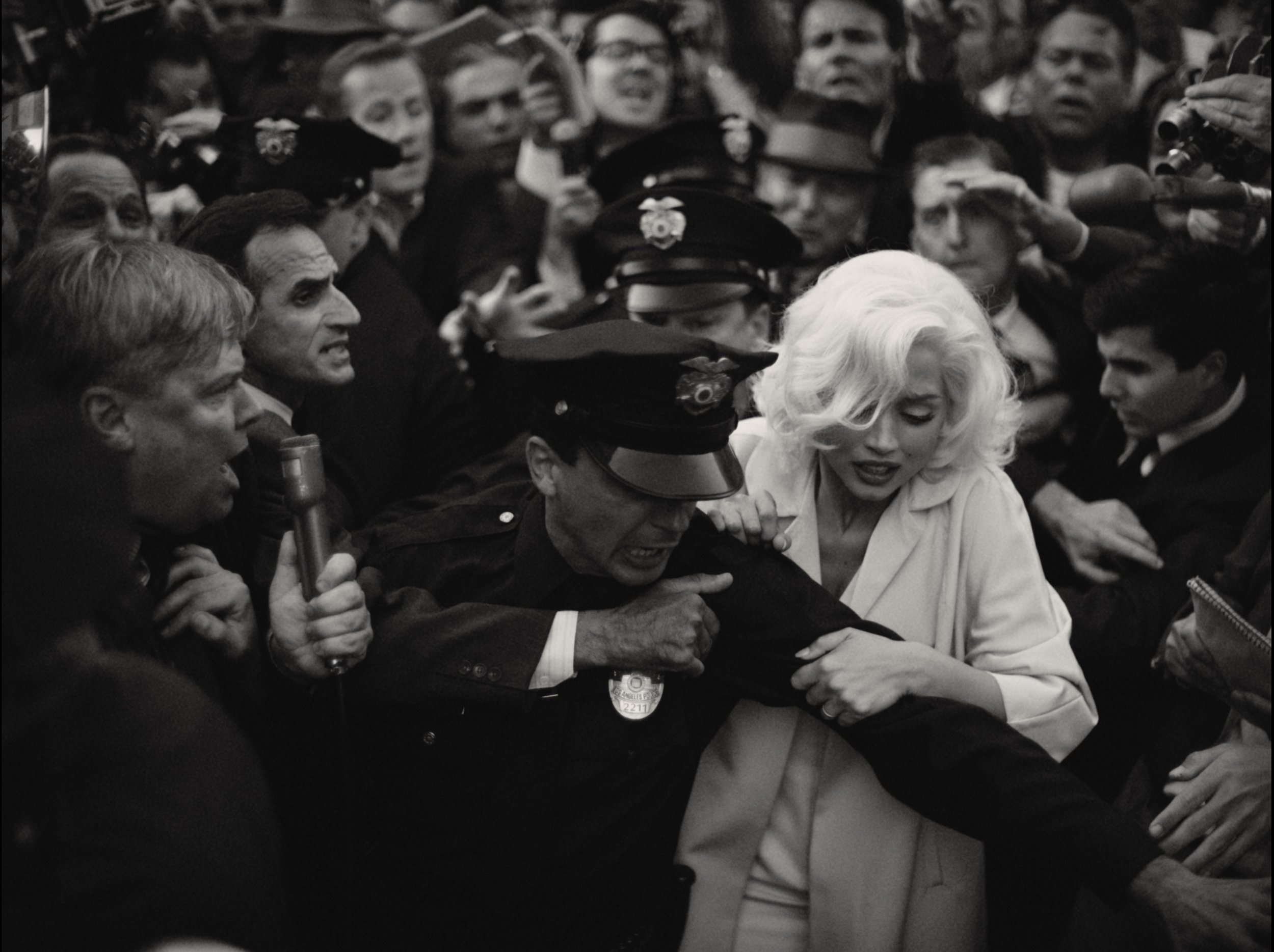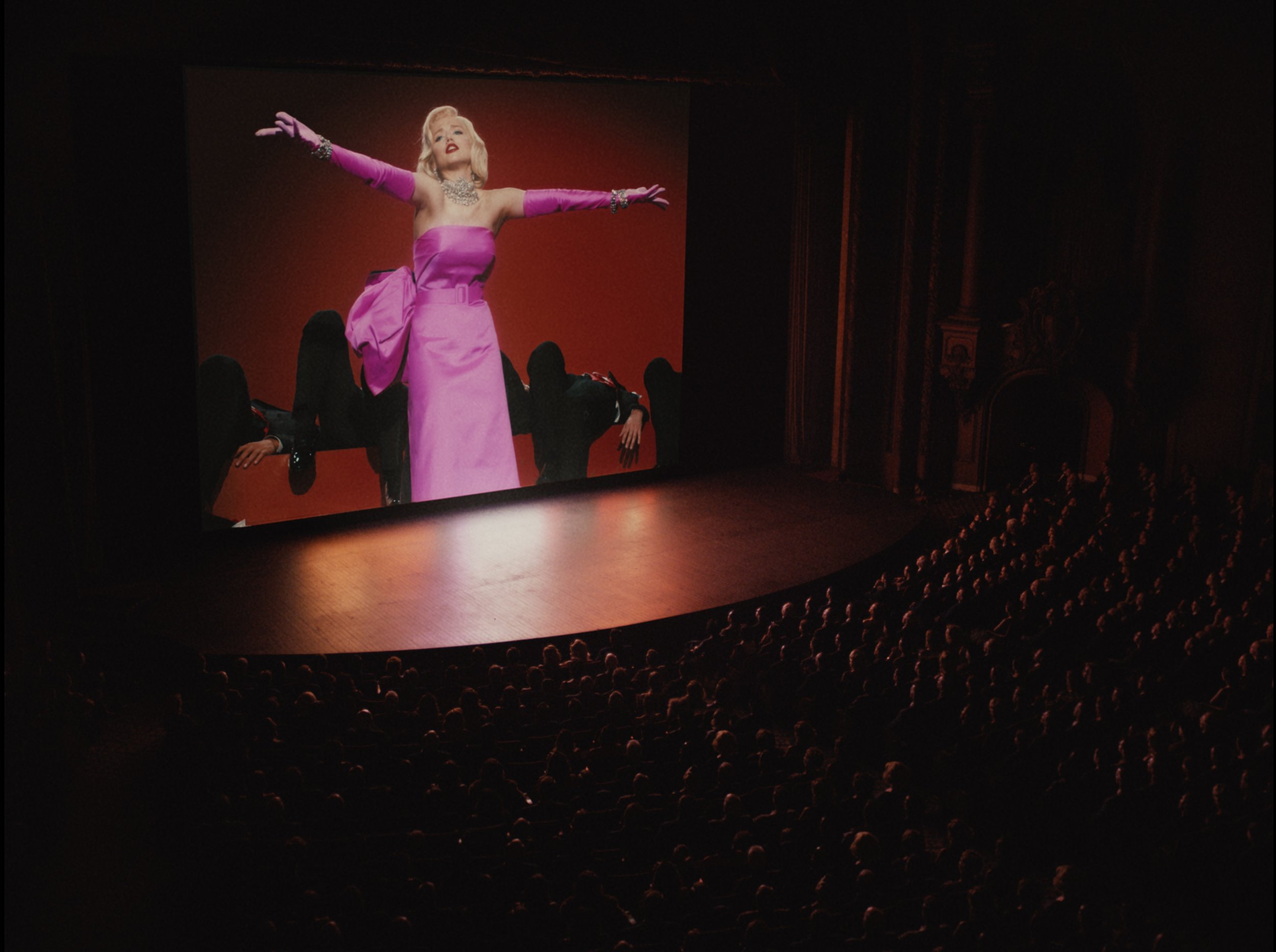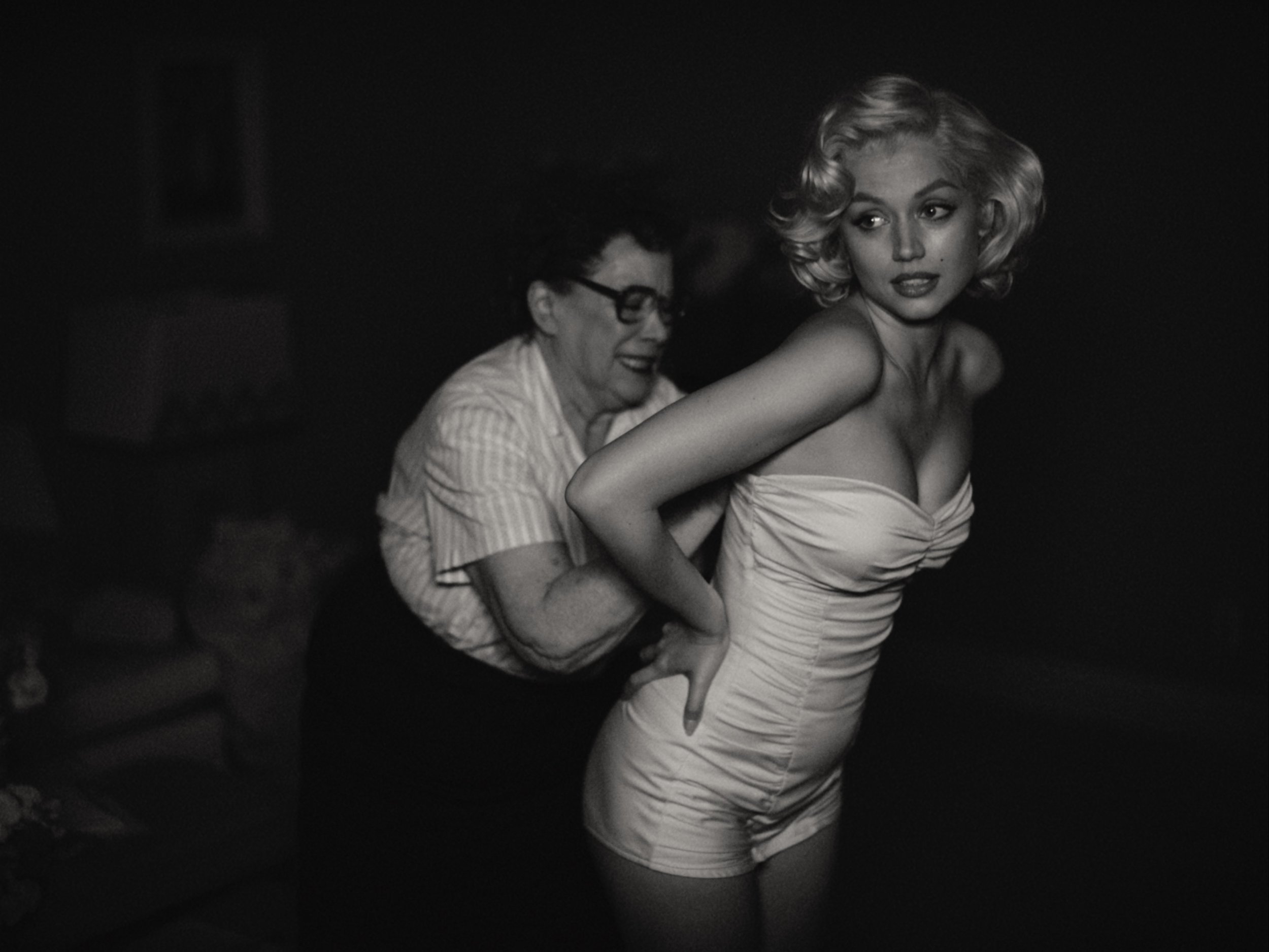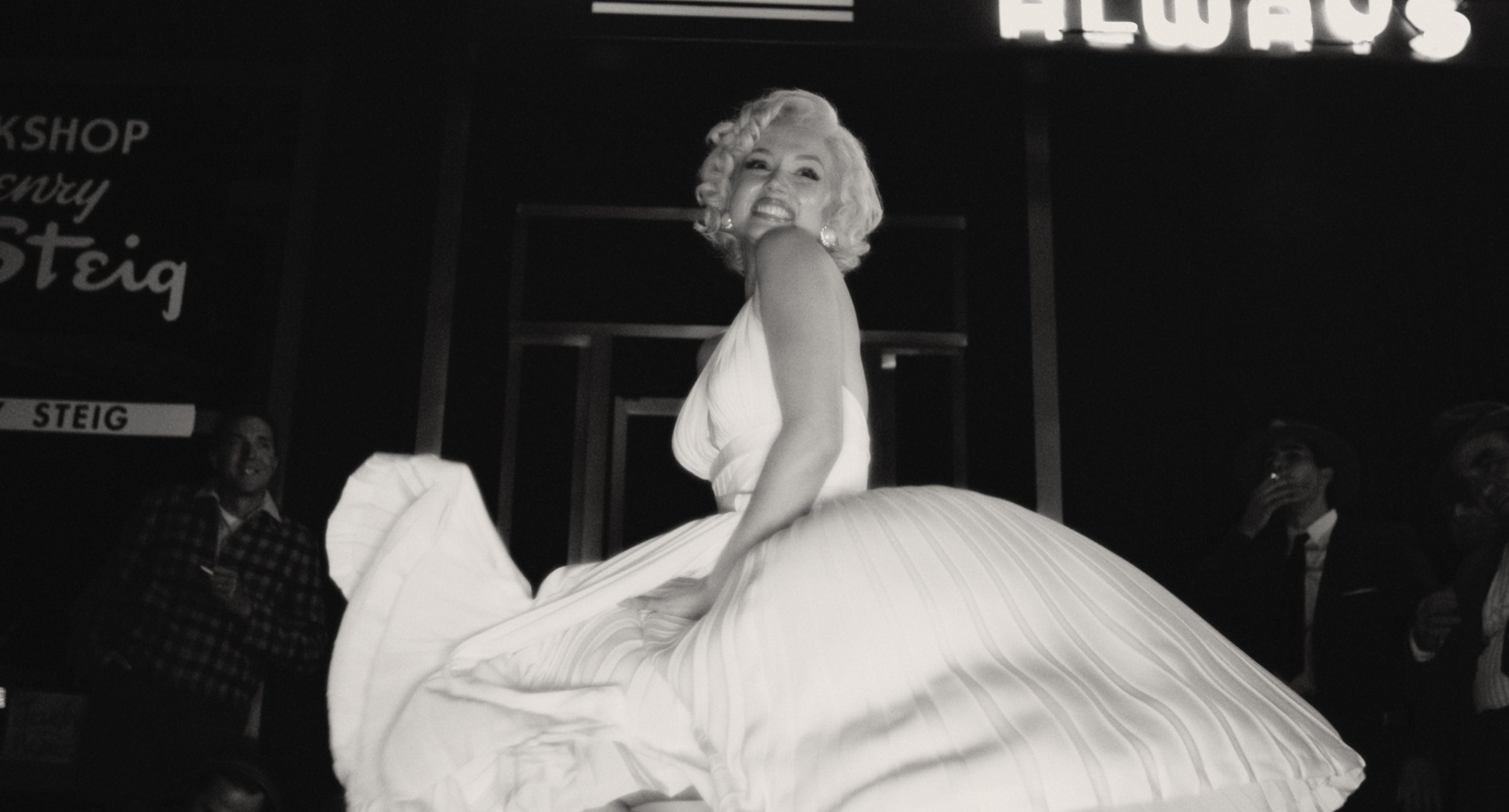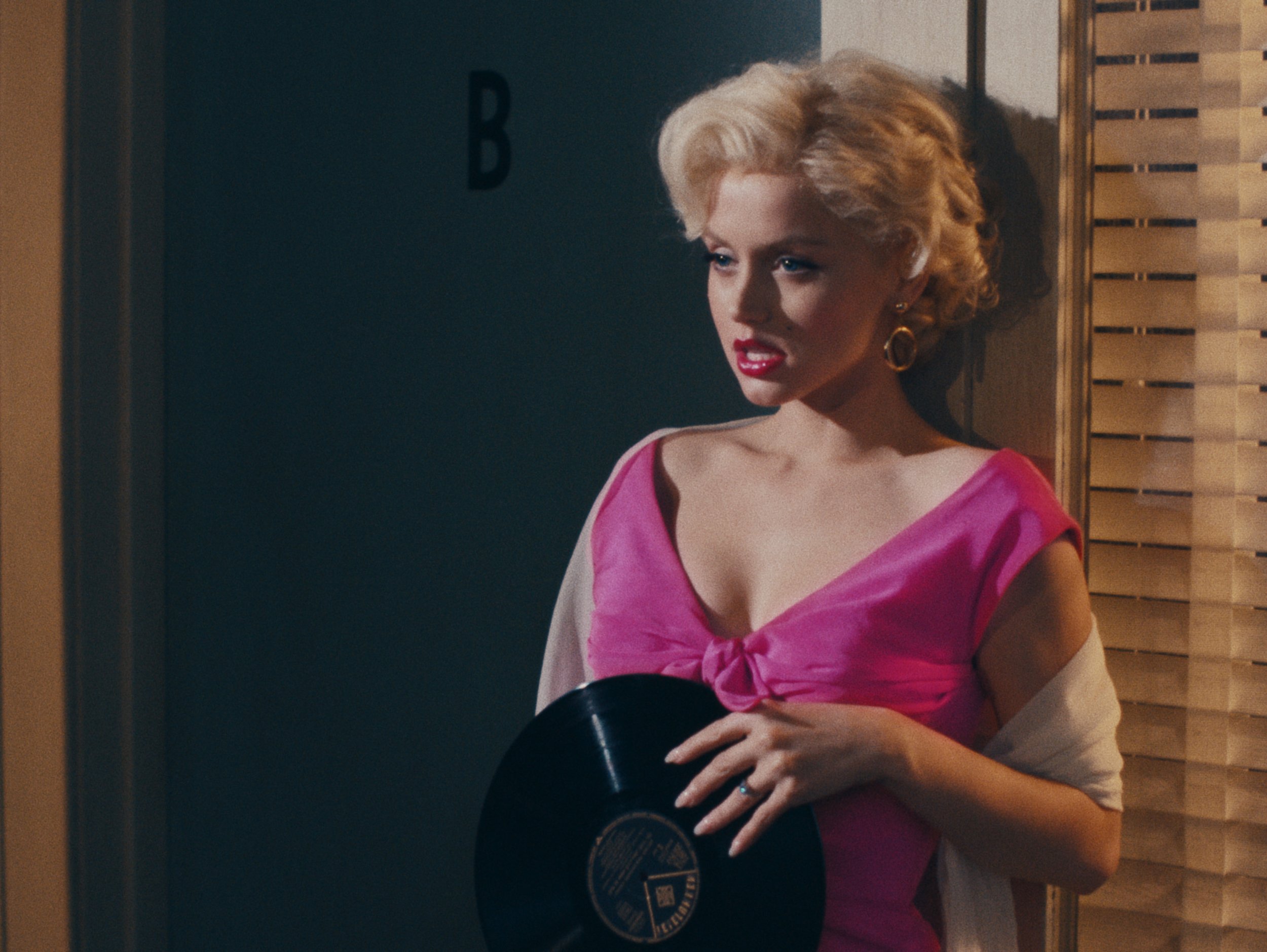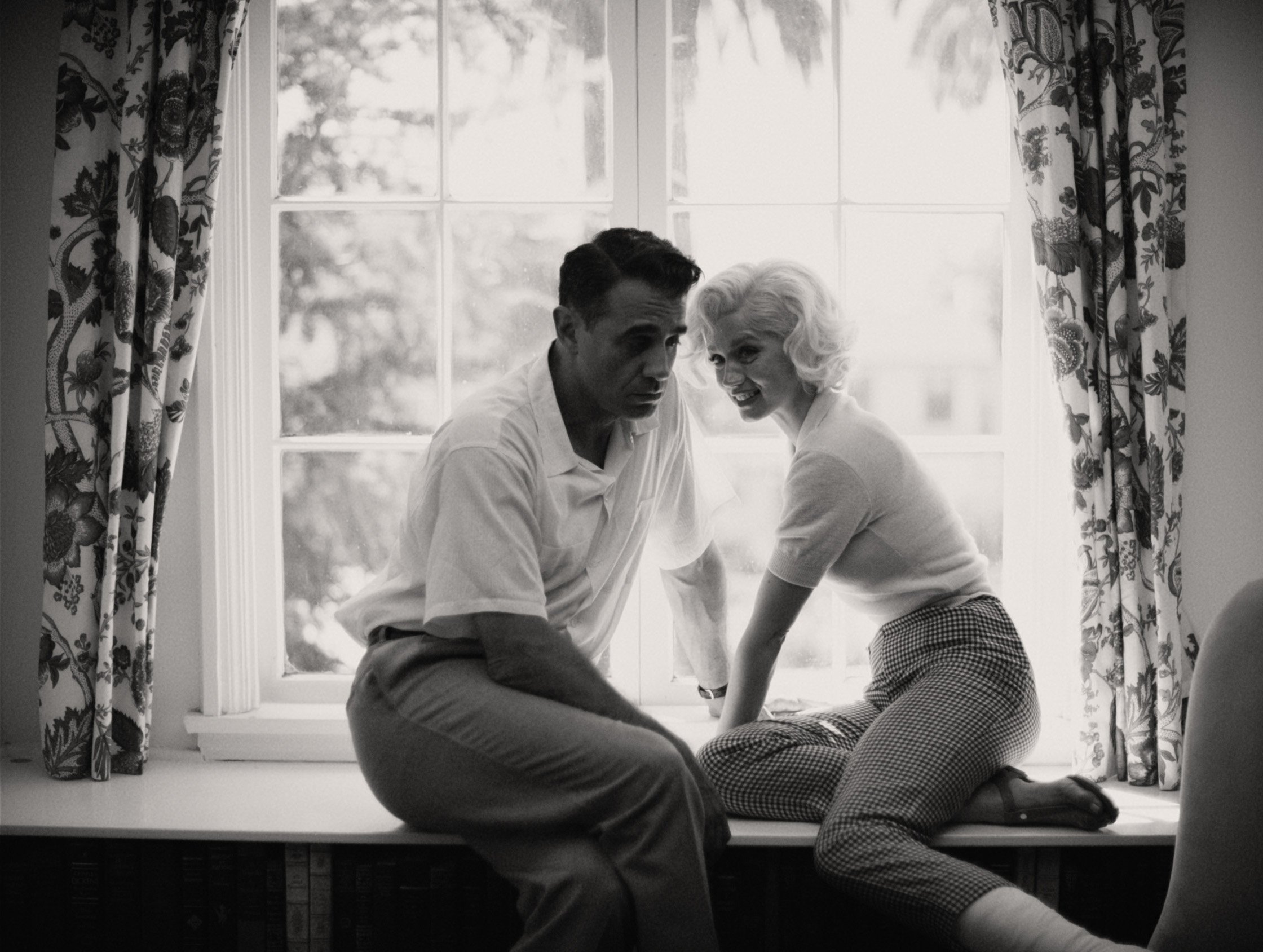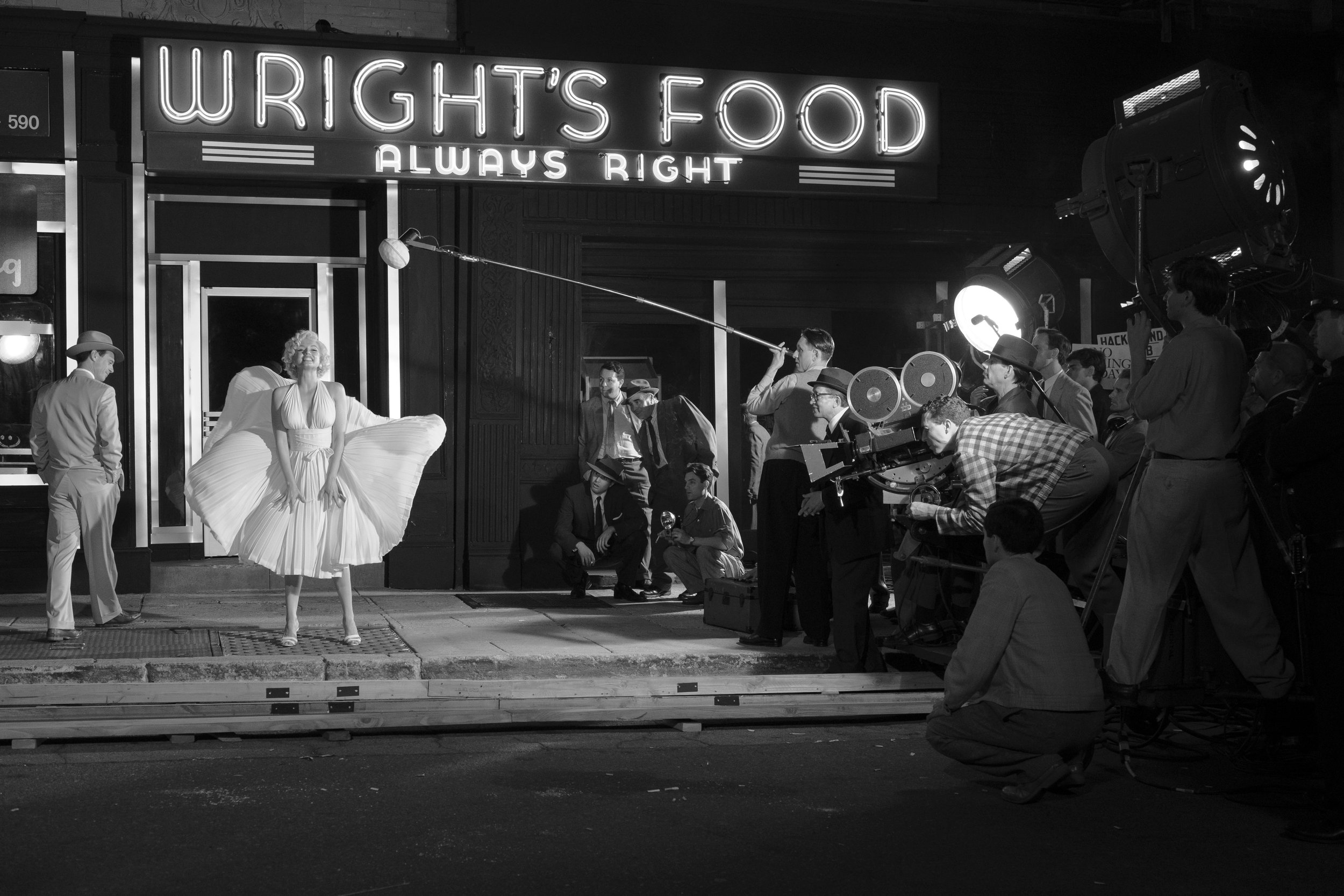MOVIE REVIEW: Blonde
BLONDE— 5 STARS
With a legend like Marilyn Monroe, it is easy to admire her beauty and the well-documented iconic poses and famous film roles. She was, and still is, an unmatched pinnacle of Hollywood stardom. But that’s the façade. That’s the persona masking unimaginable agony that was whispered by many, confronted by few, and healed by no one in thirty-six tumultuous years of life.
The controversial new Netflix film Blonde, adapted and directed by Andrew Dominik and based on the historical fiction novel of the same name by Joyce Carol Oates, swirls surreal cinematic brushstrokes meant to express the hushed nightmares beyond the celebrity dreams of Norma Jean Mortenson and compose a reminiscent and heartbreaking portrait of the legendary star. The audiences’ applause of adoration is replaced by cries of anguish and pain often unseen by anyone. It is those tears that paint this film. For better or worse, those tears are what you now remember more than the smiles when it comes to Marilyn Monroe.
LESSON #1: THE FORMATIVE RESULTS OF CHILDHOOD TRAUMA– Blonde opens in 1933 Los Angeles when Norma was a child spurned by her own mother Gladys (Julianne Nicholson) and fed a story that an unnamed matinee idol from a framed portrait hung on a symbolically cracked plaster wall was her absentee father. The vitriol and physical abuse from Gladys would become the first physical and mental scars of her life. Considering this background, our central historical figure really is a miracle creation, both as Norma Jean, an unwanted pregnancy and daughter surviving childhood, and as the semi-curated cultural icon she became. Both shouldn’t have made it as far as they did.
Project that trauma later in life when you see and hear Marilyn using “Daddy” as a repetitive pet name for her husbands and suitors. That warped obsession is telegraphed by Marilyn’s own cringe-worthy lyrics from “Every Baby Needs a Da-da-Daddy” from her 1948 film Ladies of the Chorus played over the movie’s montage of her pin-up modeling days. With that stitched transition, Blonde moves Marilyn to adulthood and the arrival of Ana de Armas.
LESSON #2: INVENTING AN ICON– The Knives Out actress’s first scene is Marilyn’s audition for Don’t Bother to Knock. It is here when de Armas bursts forth Marilyn’s talent (and very much her own as well) that will be showcased for two more hours where the camera rarely leaves her ethereal orbit. Like many of us with far smaller careers than those of Hollywood players, Marilyn would define herself through her work and the curated image that was made for maximum profitability. Unfortunately, her employing men in the industry would see her as a cash grab and a sex object. She was milked, mined, and used as such while constantly being underestimated for her intelligence, craft, independence, and determination.
Sadly, this is made harder for Norma Jean when life itself was another role. The degrading, and often graphically depicted, cycle of sexual domination and the abuses of power from men would expand to her personal romantic relationships. Like its source novel (which was adapted once before as a CBS TV mini-series starring Poppy Montgomery), Blonde observes Marilyn’s doting clinginess and longing desire to have a family through an ensemble of romantic partners cautiously named “The Ex-Athlete,” “The Playwright,” and “The President” and played respectively by Bobby Canavale, Adrien Brody, and Caspar Phillipson. Each has their chapters of differing concentrations of affection obscured by loss. The emotional pendulum of our voyeurism will swing from flashbulbs of fandom and sunny scampers on beaches to chandelier-rattling body blows and halogen-lit operating room lights of failed pregnancies.
Extended from Lesson #2, there is a rendered sense, exemplified through the presence of her longtime makeup artist Allan “Whitey” Snyder (Toby Huss, co-starring soon in Weird: The Al Yankovic Story), that Marilyn is “conjured” to appear if she wishes to be, through the mask of rouge and the calming sedation of drugs. For each beau of their given moment, there is a personalized version of an over-prepared Marilyn channeling manufactured happiness to become whatever object of desire would be deemed suitable, all as a way of compensating for her looming and increasing internal and external fears.
Blonde becomes a labyrinth with no exit when it comes to which people in Marilyn’s life are looking out for career and which are looking out for her well-being. They are not one and the same, especially when career goals clash with life’s trials and tribulations. There is a mystery to who understands this dichotomy and who does not, and where love intersects those two personal trajectories.
LESSON #3: YOU DON’T BELONG WITH PEOPLE WHO DON’T LOVE YOU– The only suitors of Norma Jean granted their true names in Blonde are the “cursed juniors” of Cass Chaplin (Love & Friendship’s Xavier Samuel) and Eddie Robinson (Evan Williams of Versailles) she meets at the L.A. Actors Circle in 1953, around the time of her Niagara breakout. Their tabloid-popping trio relationship seen by the rumor mill as vulgar would go on to be the closest thing Norma had to a “love of her life.” Cass, chiefly of the two, saw her and loved her as others did not. His soulfulness, far more than his manhood, would penetrate her life. For Marilyn’s final thoughts in the novel and in the film to be of Cass, and what could have been, shows the full scope–three horrible marriages, lost fetuses, escalating nightmares, and a mountain of debilitating chemical dependency later–of the many failed hopes for happiness that plagued her life all the way to a lonely end of utter despair.
LESSON #4: THE RATIO OF SMILES TO TEARS– This review opened on the notion of smiles exchanged for tears, and it comes through in the tormented performance of Ana de Armas. Those tallying at home could count the lovely grins and triple, no, make that quintuple, the total to equal the number of droplets shed that streak across her attractive cheek and broken visage. You feel every one of them, and that’s the power of de Armas. Not a single glandular release from her striking eyes seems disingenuous. In depicting one icon, Blonde may have just launched another with its lead actress.
One cannot help but appreciate the depth of de Arma’s layered portrayal of an actor acting to be an actor. Witness the conflicted fear she conveys in her eyes. Watch her put on that physical instability through her lithe figure to hit a mark and then crumble on another. With her voice, listen to exchanges of flutter and fluster between her Norma Jean and her Marilyn Monroe public front. Contemplate in the many moments of how Ana found the impossible places of darkness in her character and then pivot to either unfurl it or squash it with shame. The captured focus of it all is marvelous work and, far and away, the best of the 34-year-old Cuban native’s career to this point.
Like the star herself, it is very easy to be caught in the spectacle of Blonde as it selectively and economically recreates glorified images and scenes from Marilyn Monroe’s movies and public appearances. Made for a scant $22 million, the artistic efforts of Dominik’s keen collaborators are astounding. Because so much of the gaze is on de Arma, the 90+ outfits constructed by I, Tonya costume designer Jennifer Johnson and her department could fill hours of a making-of documentary on their own. Likewise, the shrewd production design and art direction of Florencia Martin (Licorice Pizza) and Peter Andrus (Being John Malkovich) follow the color shifts to emphasize interior details more than grand stages to embellish the intimate tightness on the actors and personal spaces.
Mood–somber, brutal, and all–is everything in Blonde. The film’s highlighted biographical periods are enhanced with a eloquently mindbending score from the composer team of Nick Cave and Warren Ellis (The Assassination of Jesse James By the Coward Robert Ford). Their musical motifs mixing strings and electronica have a yearning factor that shifts from auras of glow to sinking feelings of dread. It stands out as one of the best scores of the year.
The wide sweep of visual luster fleshed out by director of photography Chayse Irvin (BlacKkKlansman) followed suit. Delivered from directorial choices from Dominik, the limber camera steered by Irvin shifts between immersive color palettes, inventive POV angles, and varied aspect ratios seemingly at random will. Crossing into the 1960s, when the aspects of Marilyn’s life twist further from her control and darker in confusion, the colorlessness becomes more frequent. Astute and curious watchers will dissect and wonder if a color choice marks moments of documented truth compared to dramatized fiction or times that demarcate Norma Jean from the persona of Marilyn Monroe. Further examination is almost certain to reveal a purposeful and fascinating pattern of technique choices from the Australian filmmaker, his cinematographer, and his editor Adam Robinson (cutting his first feature film). The effect is euphorically sublime.
LESSON #5: DESTROYING AN ICON– The full result of Blonde is spellbinding and incredibly difficult. The movie pulls back on that fall into adoration and swerves towards the uncomfortable disquiet underneath. Every time you get a little hypnotized by de Armas’ Marilyn, a proverbial knife is twisted to slash down the mystique. Moments that should be lifts of spirit tailspin to torturous ordeals.
Folks, please understand that Blonde is fiction, straight from the author’s mouth. Take that and let the expression of compelling drama, even with its heavy triggers, develop before you. Joyce Carol Oates thematically likened her book’s subject to a hummingbird, beautiful on the outside and fighting with every moment to survive. Still, she drew from long-rumored findings and testimonies of many observers to invent a complicated narrative, one that Dominik molded successfully. The author praised Dominik’s work as “startling, brilliant, very disturbing and perhaps most surprisingly an utterly ‘feminist' interpretation” and for good reason. The support is earned and valid.
If even half of the things depicted in Blonde happened to Norma Jean Mortenson, they are monstrously too much. Imagine how much worse the full truth could be. That’s a crushing cloud over your head as a viewer of Dominik’s film. This is a mystic fable and a fever dream that becomes a suffocating nightmare. There is no cushioning this fall from grace for this damaged woman. There is no happy ending, and there is never going to be one, no matter how hard someone wishes or wills for one to arrive during the film’s sizable running time.
There is merely an end to the pain by way of a self-destructive escape. People need to be ready for all Blonde’s path implies and stirs up. That bleakness is going to be a hard trait for many viewers beholden to a celebrated public icon to accept versus those with the capacity and empathy to understand the damaged individual underneath the fame.
At one point in Blonde, the question is asked, “Where does dreaming end and madness begin?” Damn, that’s potent when absorbing the totality of this film and the consequences of popularity and idolization. When you see this fictionalized take, back when 15 minutes of fame were an eternity compared to the 15 seconds of today, you will no longer have the same celebrity dreams. We are supposed to be uncomfortable, disillusioned, and beset with regret and disgust over the controversial content and its destructiveness.
LESSON #6: WE DESERVE TO HAVE THIS LOSS RUBBED INTO OUR FACES– This may be harsh to say, but Blonde is allowed to rub this loss in our faces. Like the industry revelations and pushback hashtag movements of this last decade, people need to believe women like Marilyn Monore, say something when they see wrongdoings, and help these situations. Because, if this can happen so severely to the brightest we ever had, it can–and has–happened to hundreds of the smallest too who never made it like Norma Jean Mortenson did. If it means we need to witness a harsh fictionalized interpretation to remind us of the need to increase lasting accountability, so be it. Movies like Blonde that can weather that burden and evoke such responses deserve to be appreciated for their courage.
LOGO DESIGNED BY MEENTS ILLUSTRATED (#1069)


